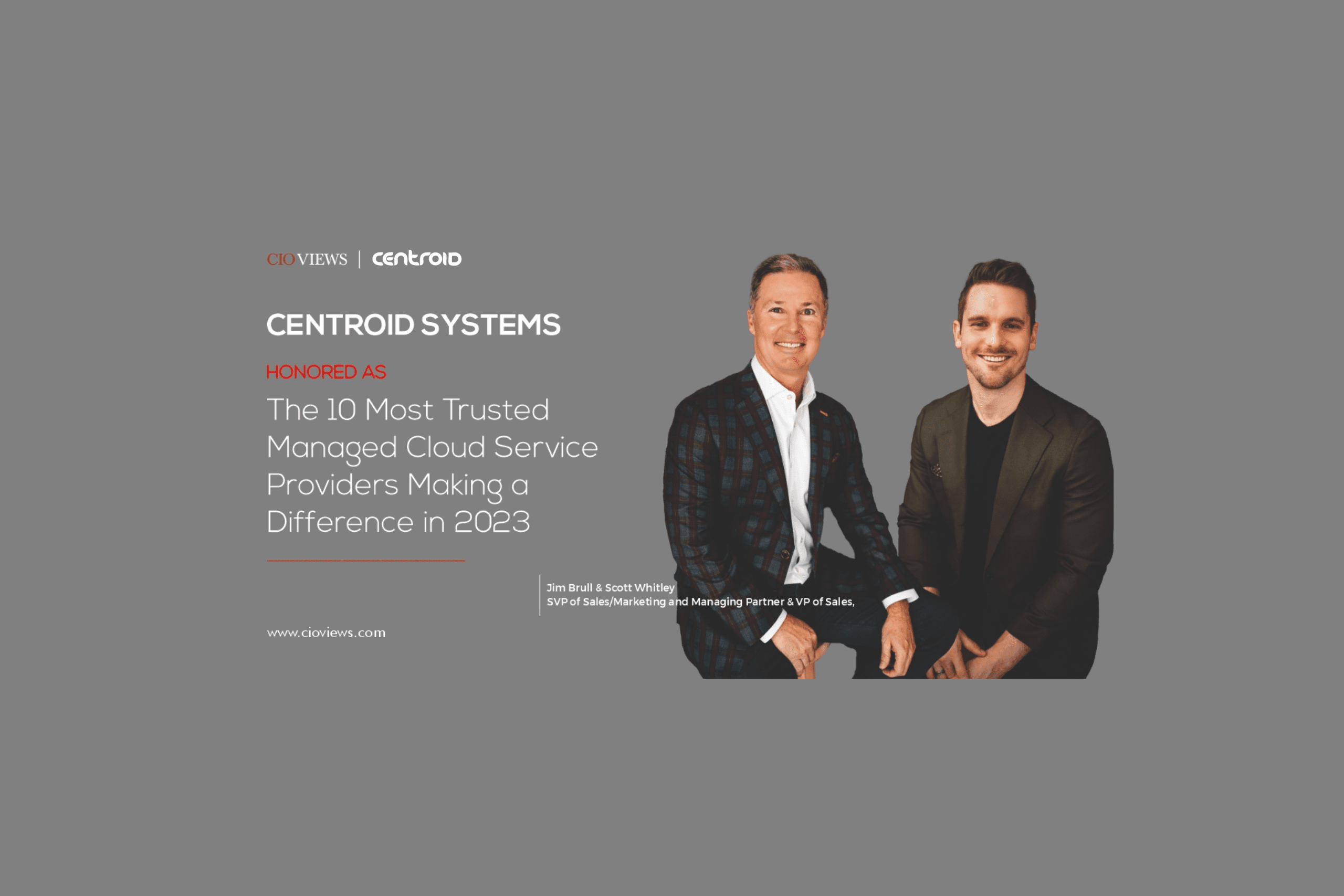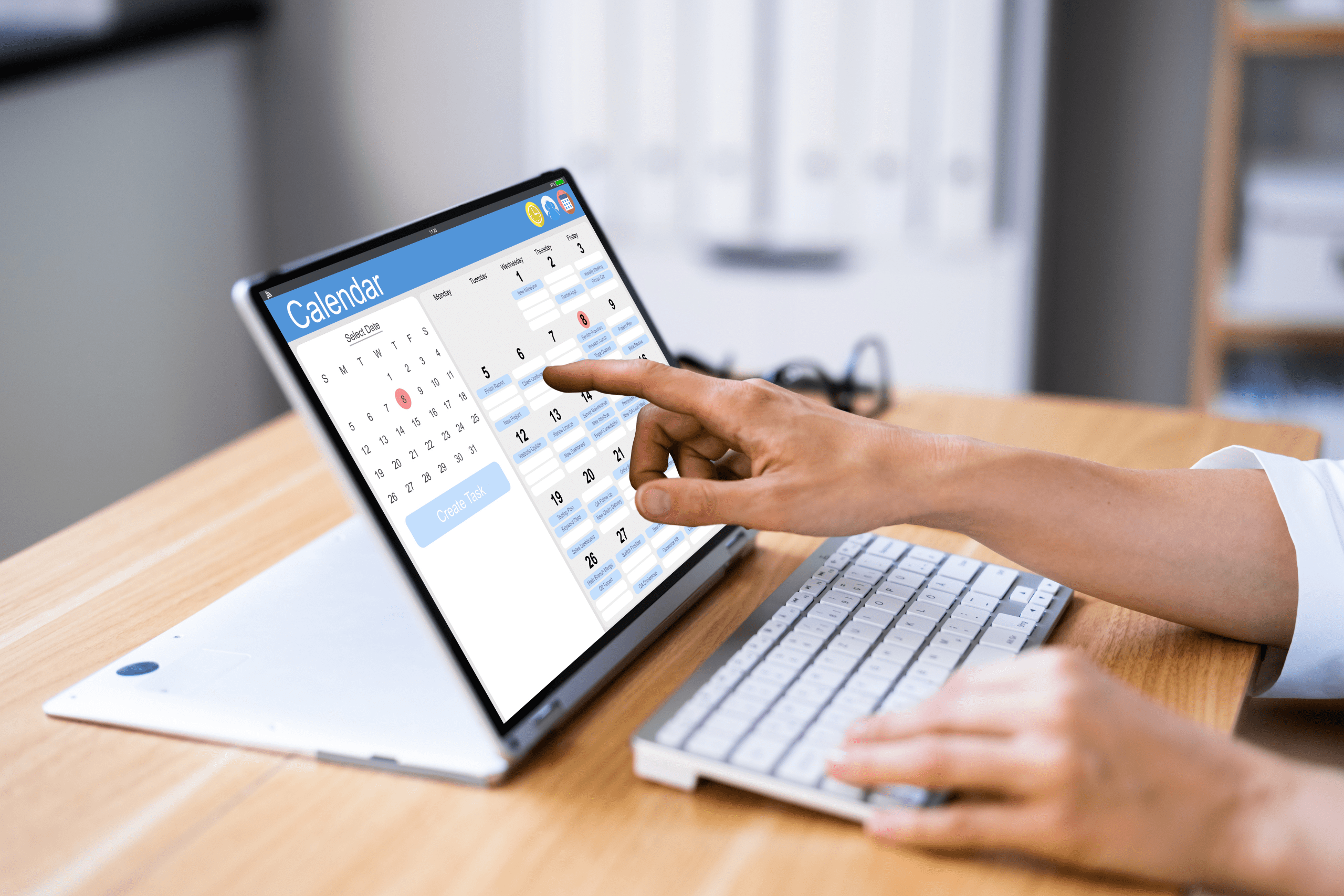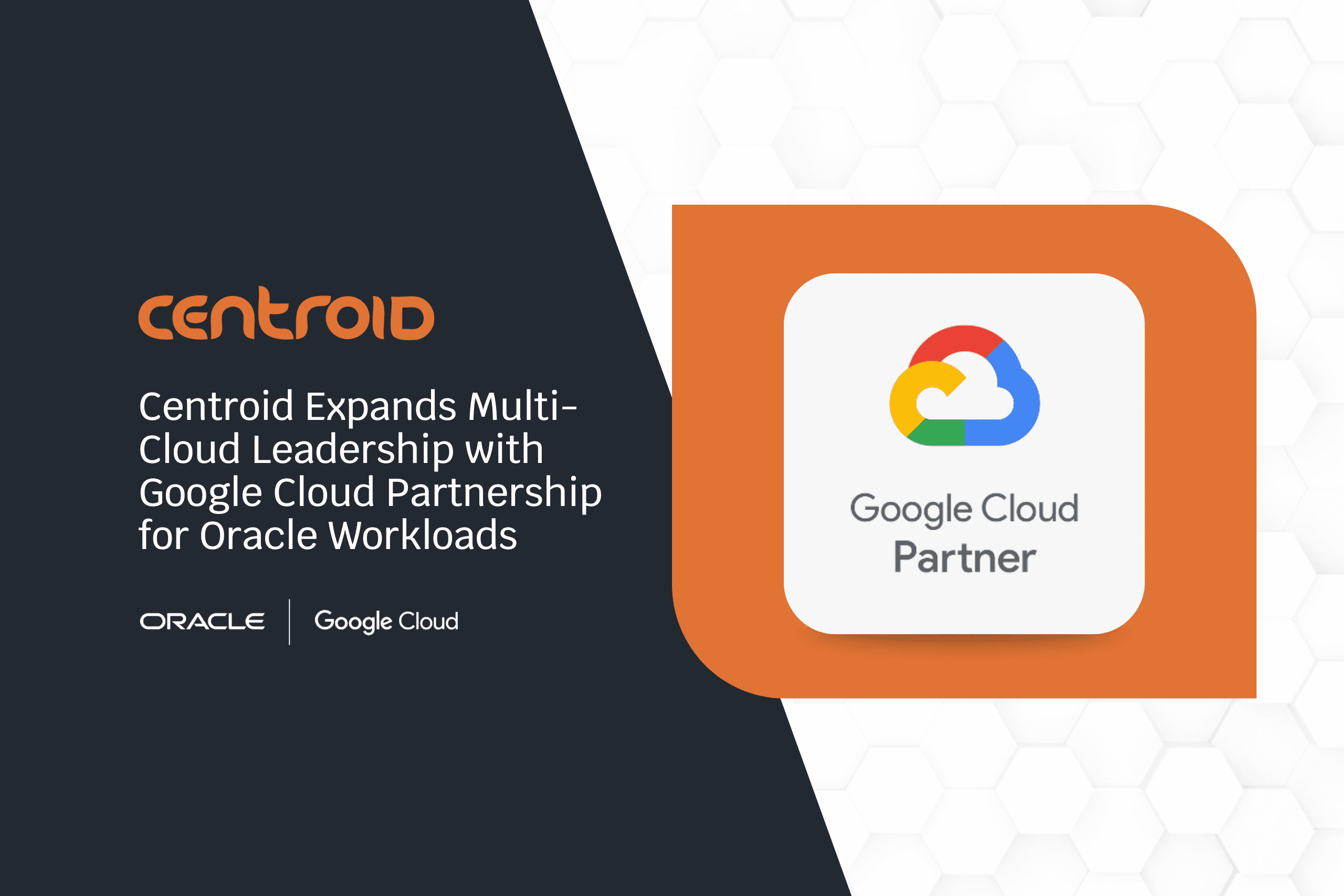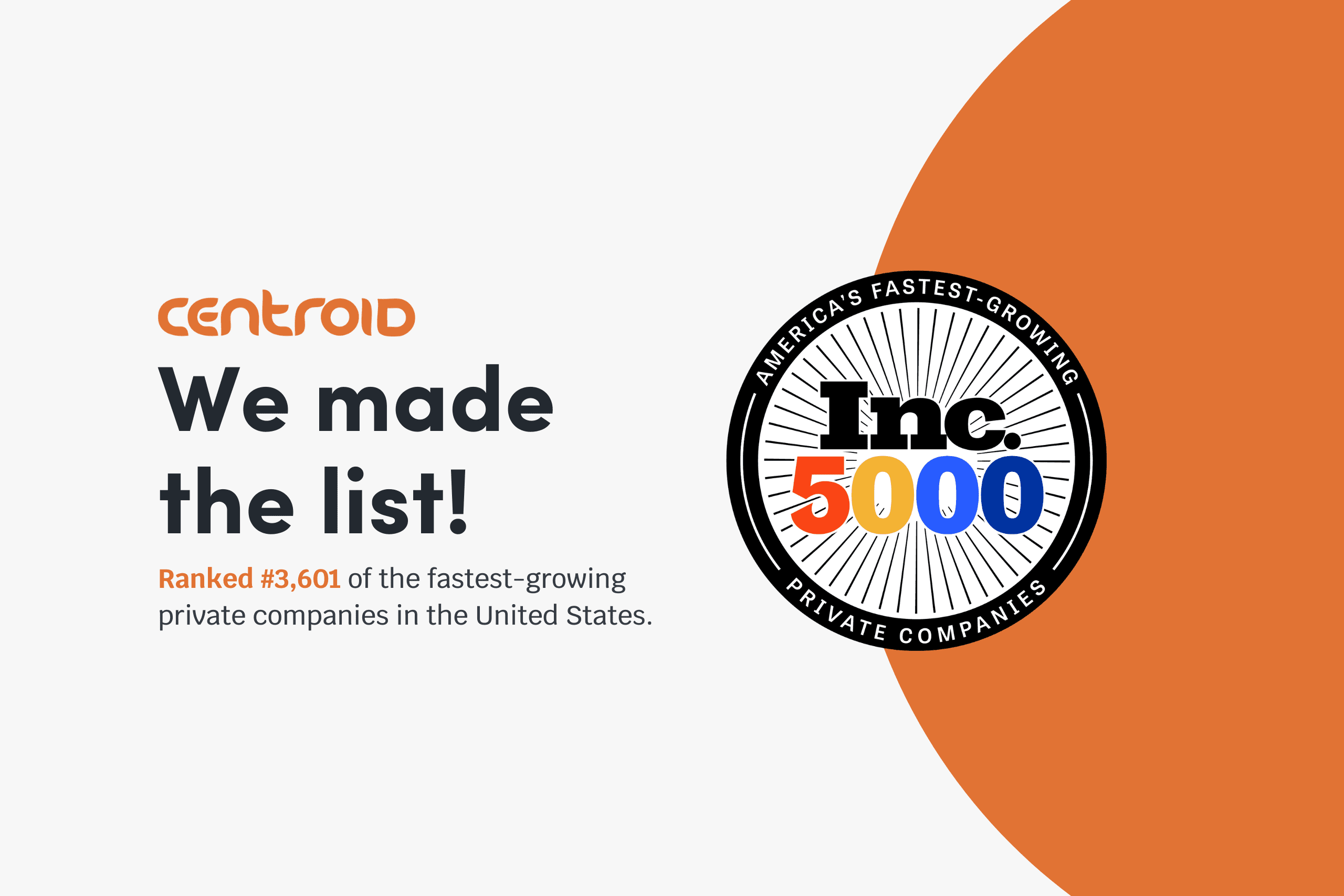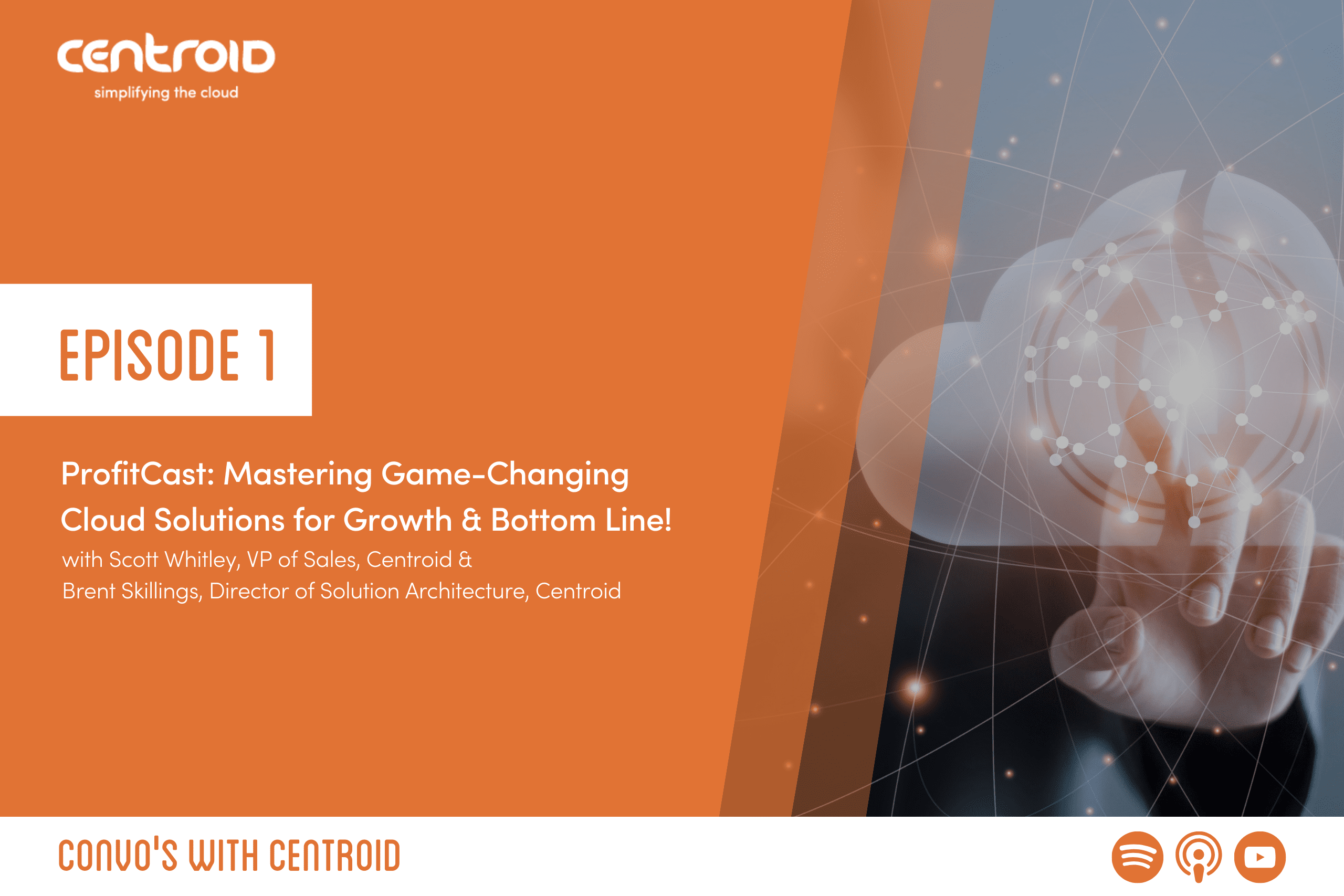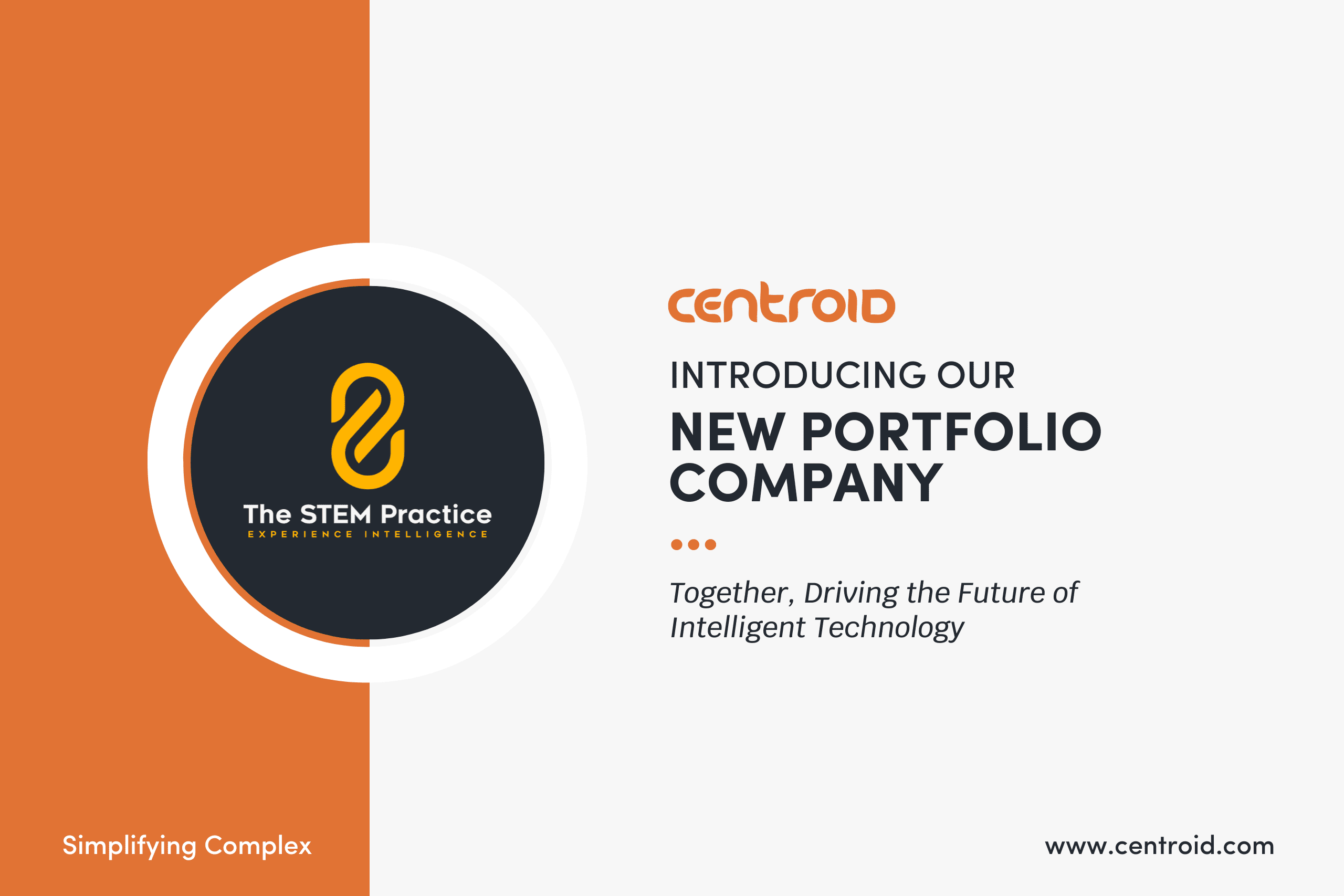by Amarnath Kasturi – Lead Consultant & Satyam Damisetti – Lead Consultant
Why is Oracle Cloud Fusion Procure to Pay (P2P) Important?
The Oracle Cloud Fusion Procure to Pay (P2P) software suite streamlines the procurement process starting from the request to the invoice. The suite includes modules for Requisition, PO Creation, Receipt, and AP Invoice Match, which work together to create a seamless integration and provide a complete life cycle for the transaction.
The P2P process is mainly applied to industries such as manufacturing, FMCG, sales, and distribution. It encompasses the entire set of steps a company or organization performs when procuring goods or services from a vendor. These goods or services may include raw materials, professional services, stationery, infrastructure, or any other miscellaneous expenses. The process involves creating requisitions, making purchases, receiving goods or services, submitting payments, and accounting for them. It covers the entire process from the point of order to payment.
P2P is a solution that integrates purchasing and payables to maximize ROI. With Oracle Procure-to-Pay, companies can reduce costs, improve margins, and streamline the procure-to-pay process to optimize working capital.
What you’ll learn…
The P2P process involves two modules, namely the Procurement and Payables Modules. In summary, the process begins with capturing the demand for a product or service, obtaining quotes from suppliers, converting quotes into purchase orders, receiving the material, and finally releasing payment to the vendor. The steps you will learn in this blog are as follows:
- Organization Structure to understand procure to pay cycle process flow.
- How to create a purchase requisition in Procurement.
- Steps to create a purchase order.
- Creating receipts.
- Creating AP Invoice.
Note: We need to follow several steps to complete the cycle. The diagram below outlines the steps.

How to Create a Procure to Pay Cycle
The P2P cycle in Oracle Cloud Fusion is a process that starts with a requisition being created in Oracle Procurement and ends with the supplier being paid fully or partially for the purchase.
Overview
The purchasing process begins with a demand, which is recorded as a requisition. This requisition serves as the basis for requesting quotes from suppliers. The supplier quotes are then entered and compared within the application. After analyzing the best product and price options, the organization chooses a supplier and awards a purchase order. The supplier then ships or provides the material/service to the organization, and the organization will book the invoice to pay the supplier.
1. Create a Requisition
With Purchasing, you can easily create requisitions online. Complete a requisition for any item by simply entering the requestor name, item description, delivery location, price, delivery quantity, and accounting distribution.
- Navigations: Open the Springboard > Click on Procurement > Select Purchase Requisition
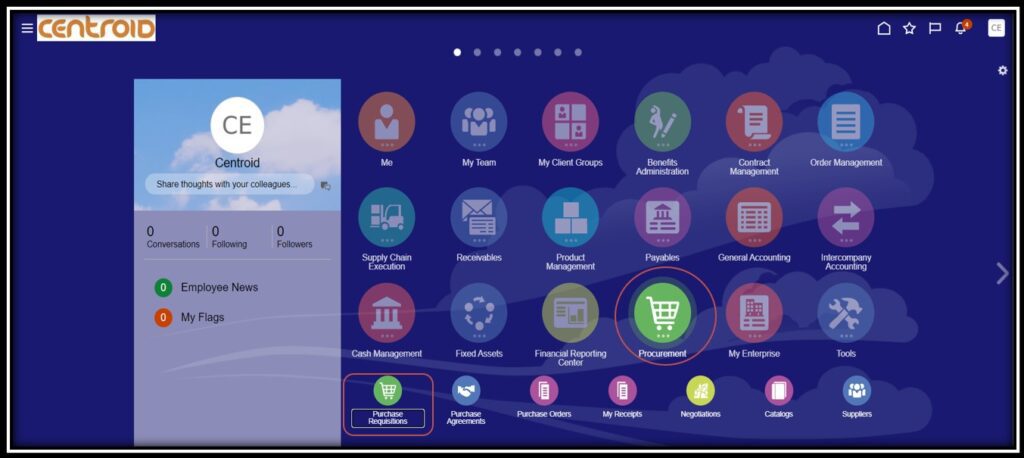
- Go to More Task > Select a Noncatalog Item
- Enter the item details, category name, quantity, and price > Add to Cart > Click Submit
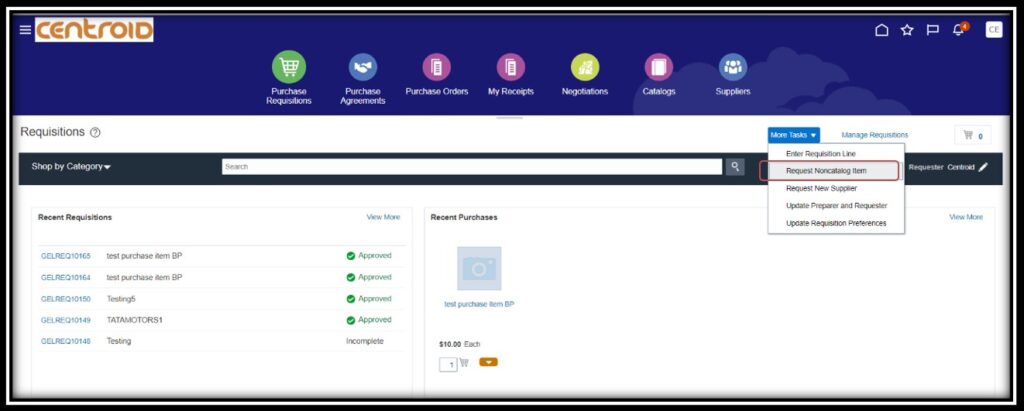
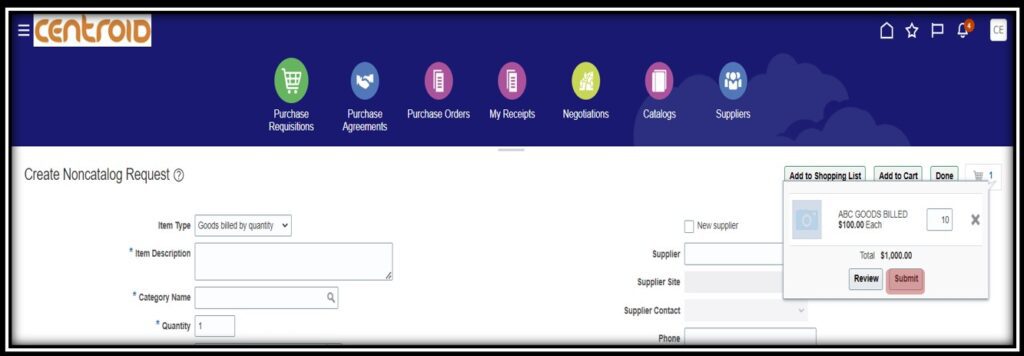
The Requisition number is successfully generated: GELREQ10173
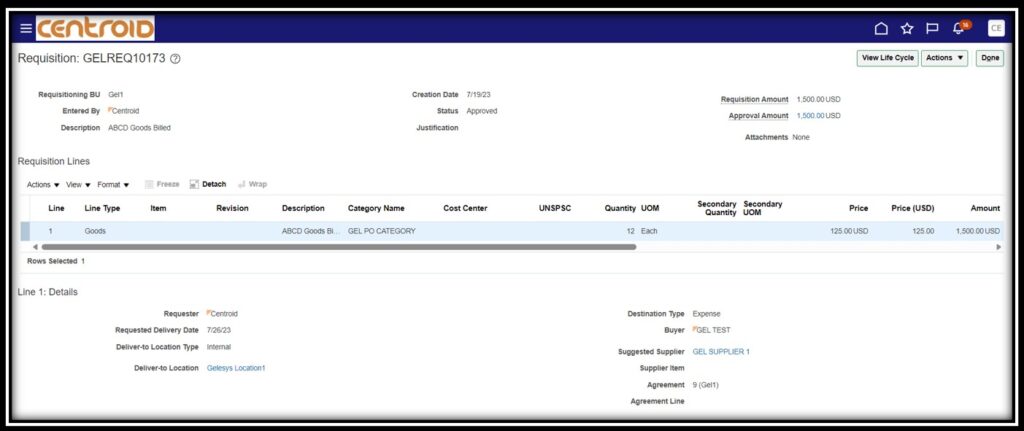
2. Create a Purchase Order
- Purchasing offers the Purchase Orders Window, which allows for entering Standard Orders. To do so, a Process Requisition must be created
- Navigation: Sign into Application > Navigate > Procurement > Purchase Order > Create Process Requisition
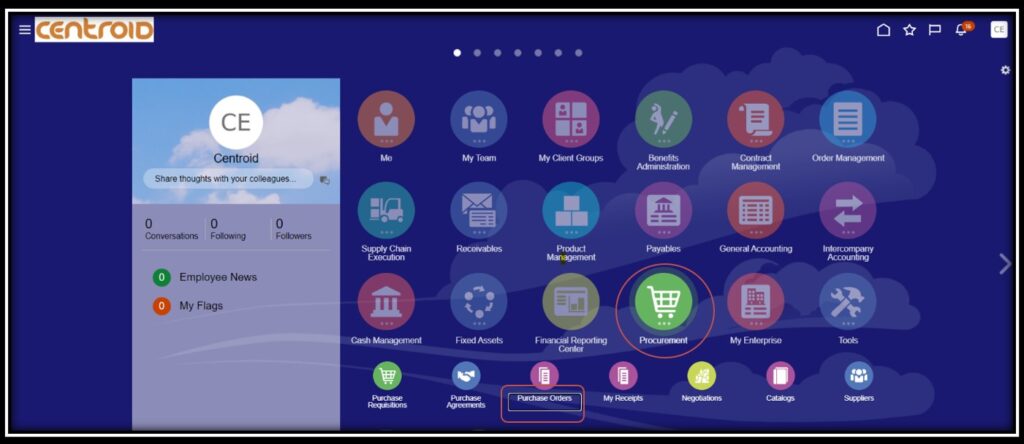
- After creating Purchase Requisition No: GELREQ10173
- Navigation > Purchase Order > Process Requisition
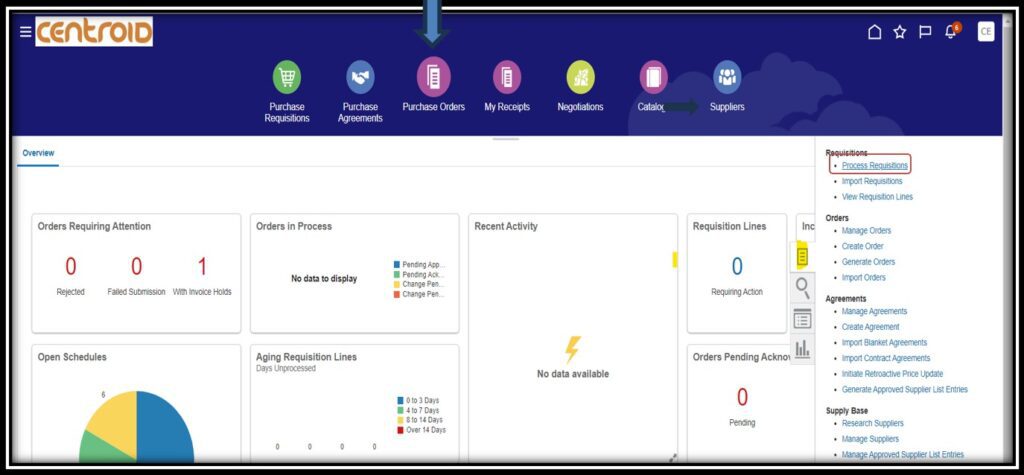
- Select the Requisition Line > Click on Add to Document Builder
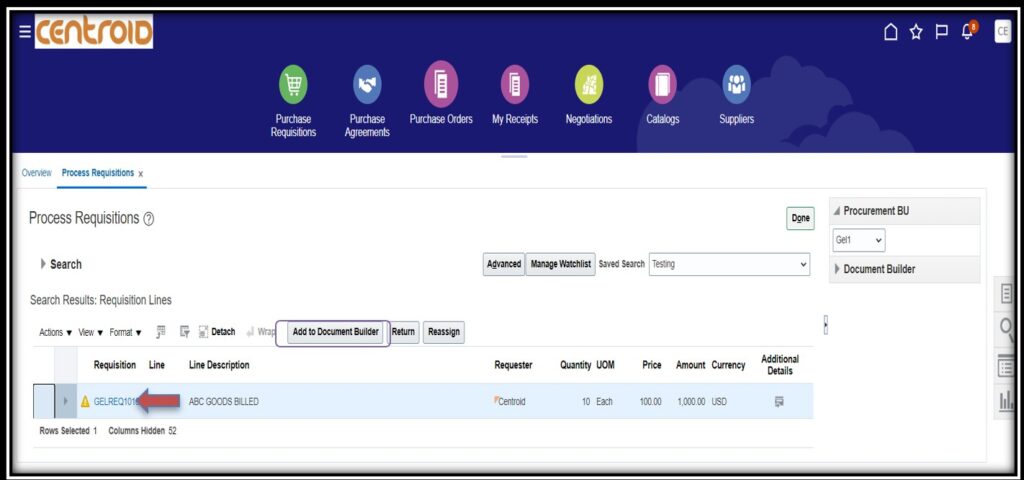
- Click OK
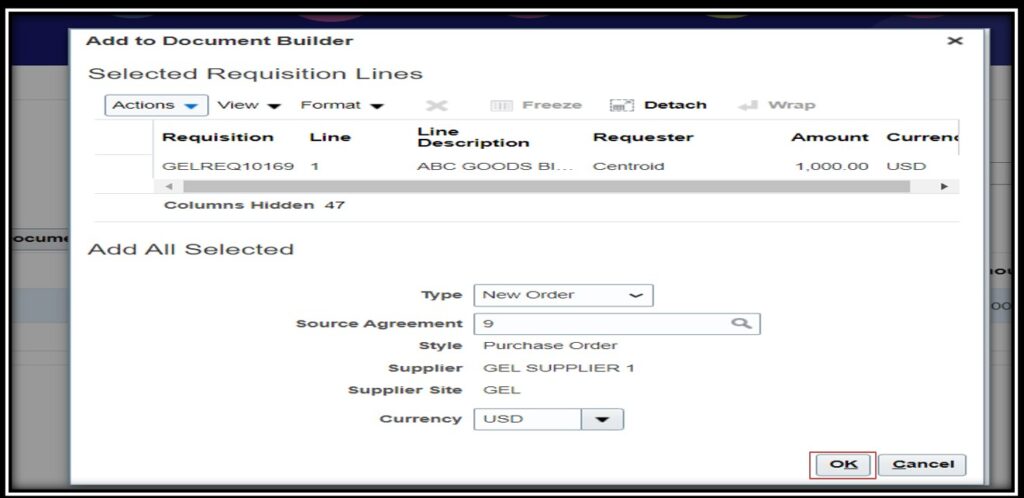
- Cross-check the details > Click on Create to Purchase Order
- The document (Purchase Order -36 (PO)) was created
- Once the purchase order is sent to your supplier, they are authorized to ship goods at the times and to the locations that have been agreed upon
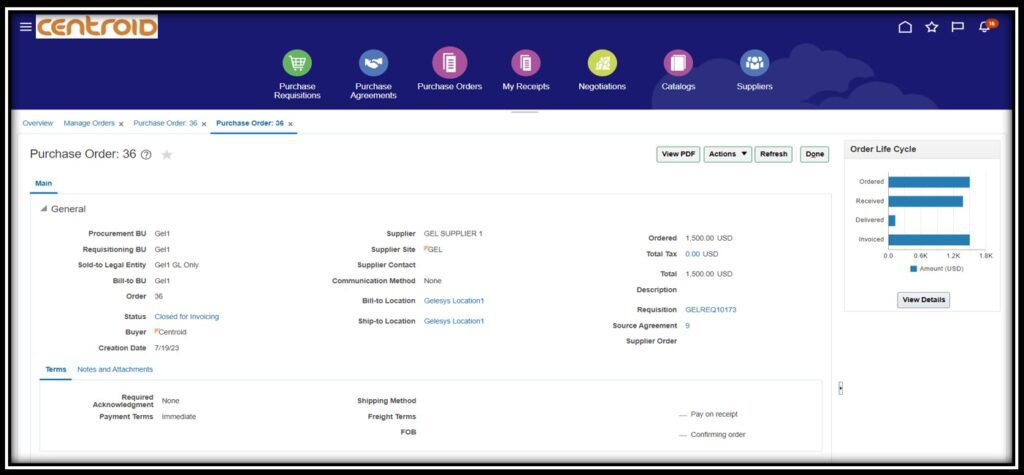
3. Create an Inventory Receipt
Purchasing lets you control the items you order through receiving, inspection, transfer, and internal delivery. You can use these features to control the quantity, quality, and internal delivery of the items you receive.
- Procurement >My Receipts
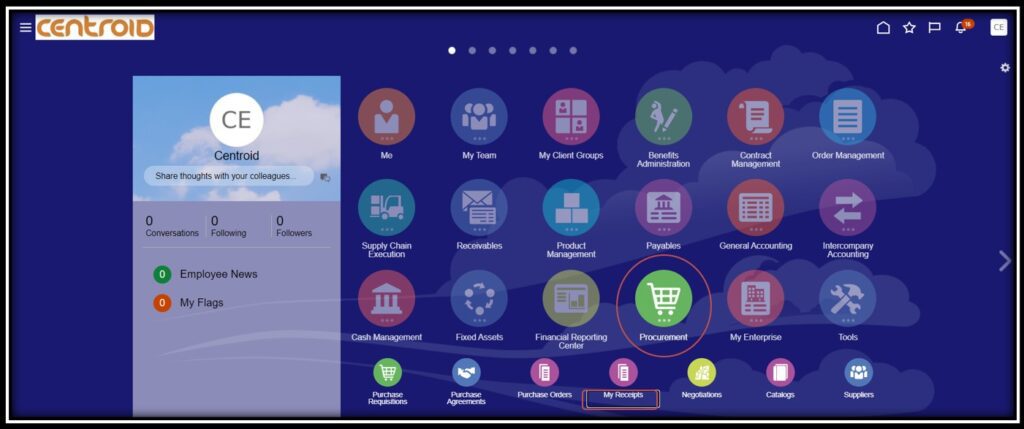
- Enter the Requisition Number > Click Search
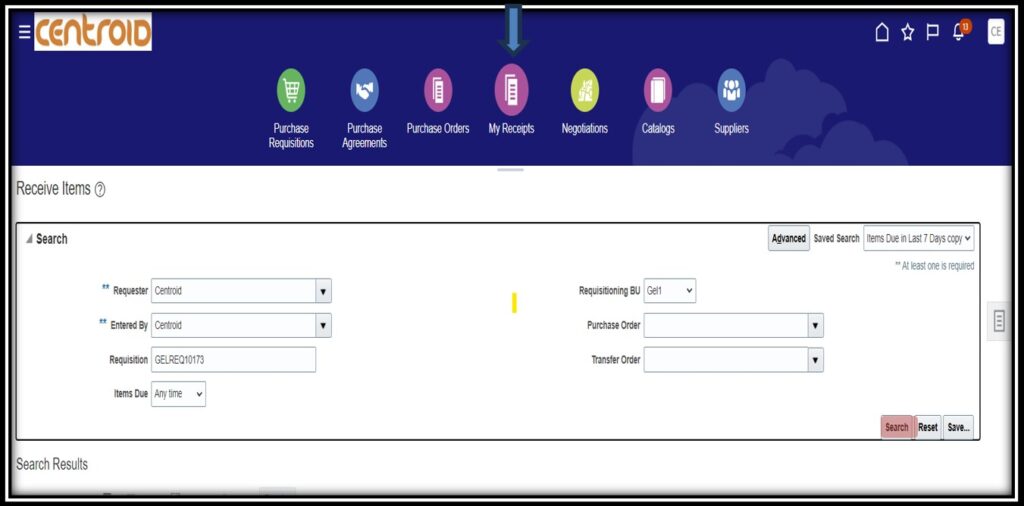
- Select Requisition Line > Receive
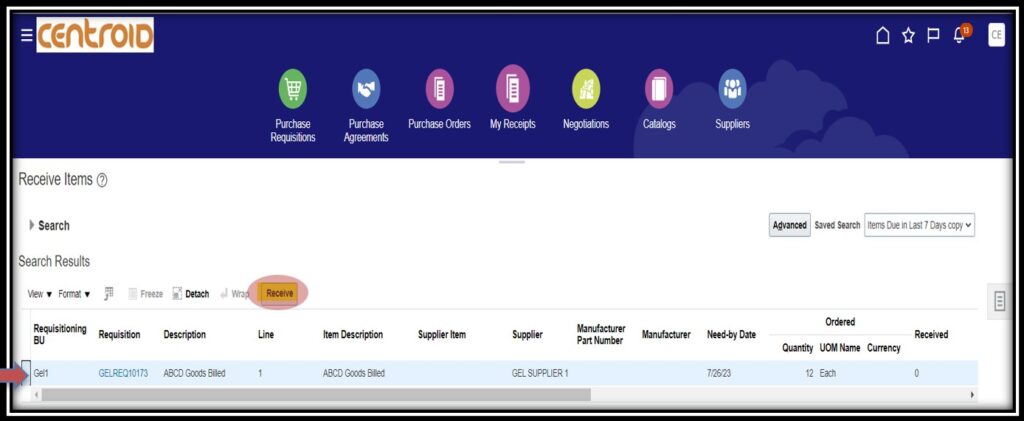
- Click Submit to Create Receipts
- Receipt of Material: After receiving the PO, the supplier will send the items
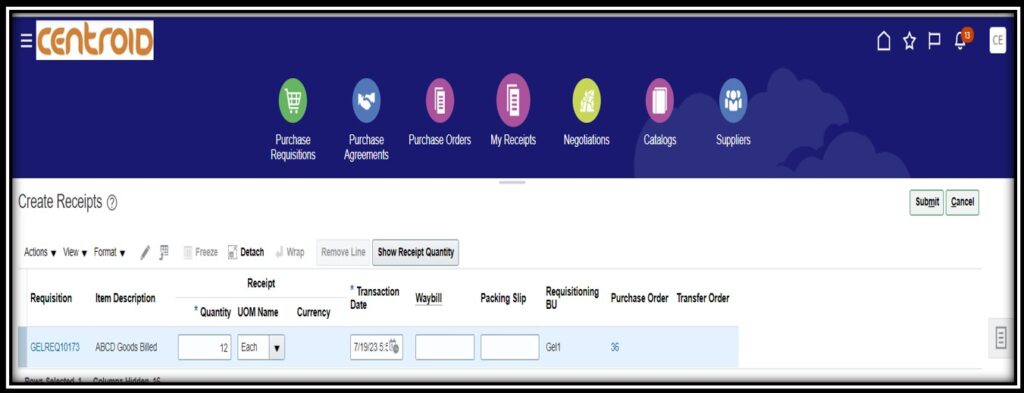
- Receipt number -129 was Created
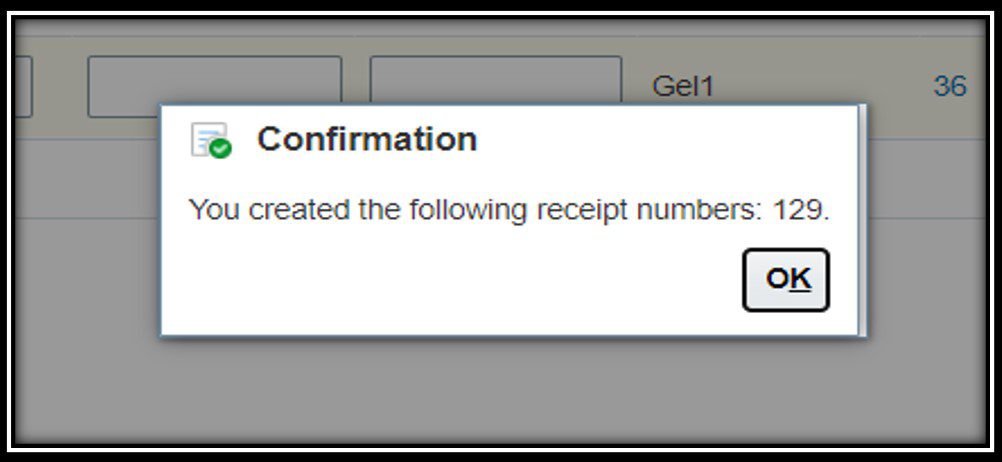
4. Enter an AP Invoice
An Accounts Payable (AP) invoice from a supplier represents an amount due for goods or services purchased. Standard invoices can be either matched to a purchase order or not matched. Oracle Payables facilitates the entering of supplier invoices and/or credit memos.
- Invoice Created Against PO-34. To create, Click on Payables > Invoice
- Once you’ve received the goods or services from your supplier. Using Payables, you can record invoices
- Navigation: Open the Application > Click on Payables > Select Invoice
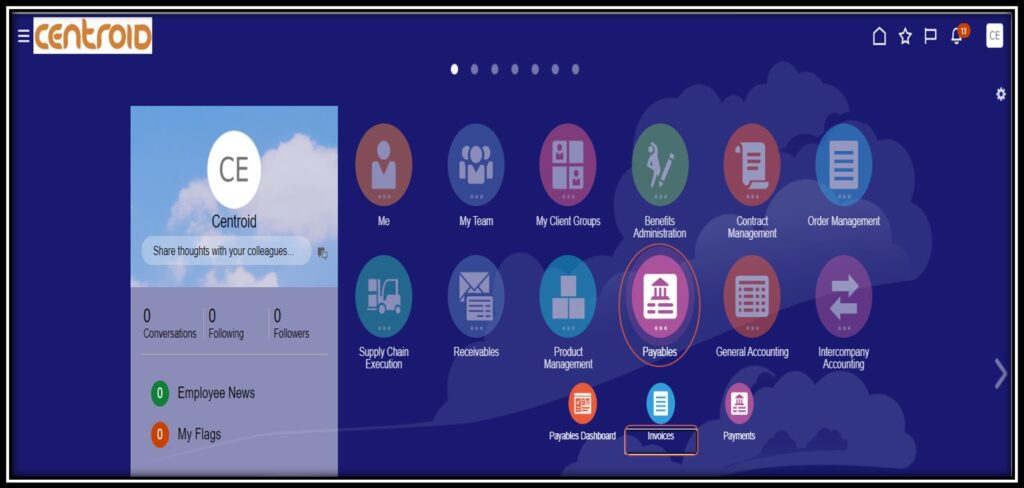
- Click Create Invoice

- Identify the PO > Match the Invoice line > Click on the Invoice Action > Validate
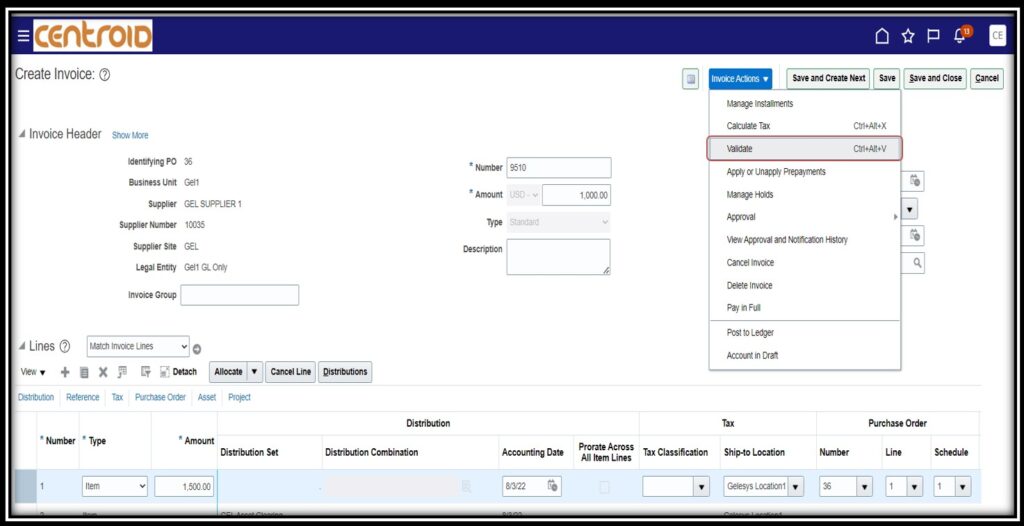
- The invoice-9510 was validated and was created successfully
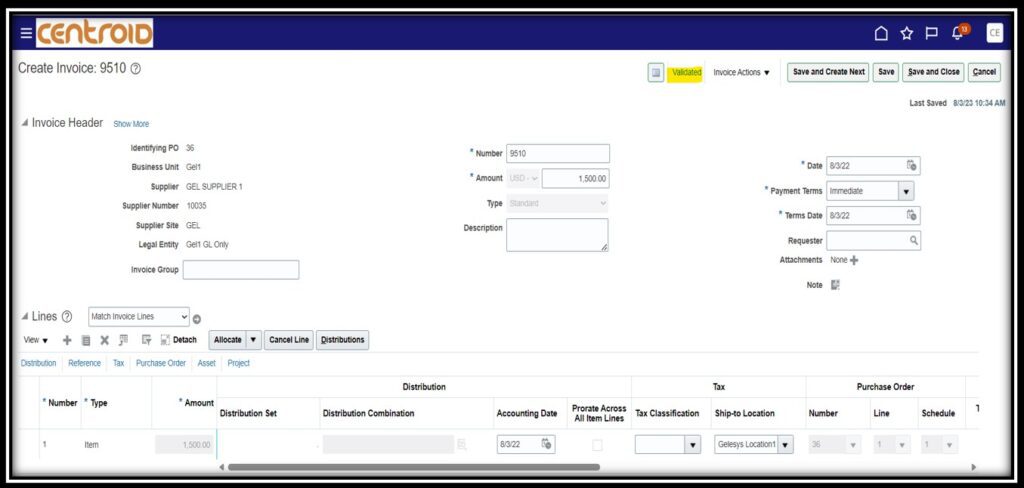
- After invoice creation, there are a few more additional steps to follow (i.e., posting into the ledger)
- To post to Ledger > Click on Invoice Actions > Select Post to Ledger Option
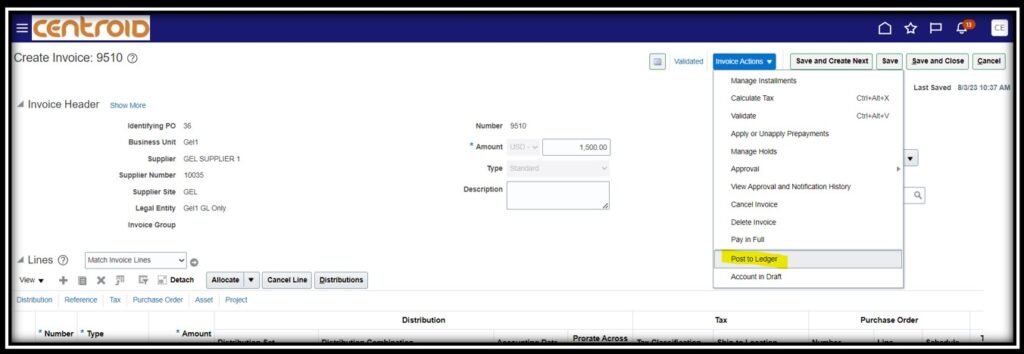
- We can view the Account lines after posting to the ledger
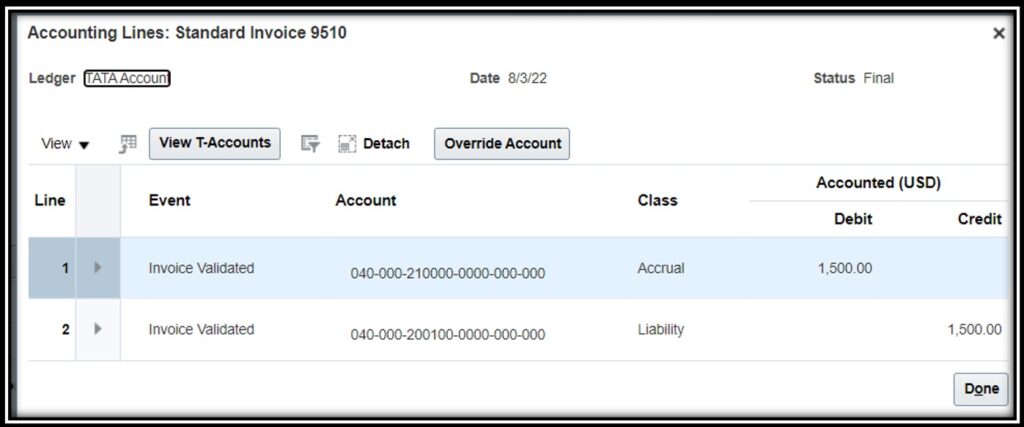
PO Matching Concept
In this process we are using 3-way matching, here you will compare 3 documents (i.e., PO, receipt, and invoice).
3-way matching verifies that the receipt and invoice information match with the quantity tolerances defined:
Quantity billed <= Quantity received.
Ex.: Suppose we have ordered 100 items in PO, but we had received only 75 items, but we had received an invoice for 100 items, so, we will make payment for only 75 items.
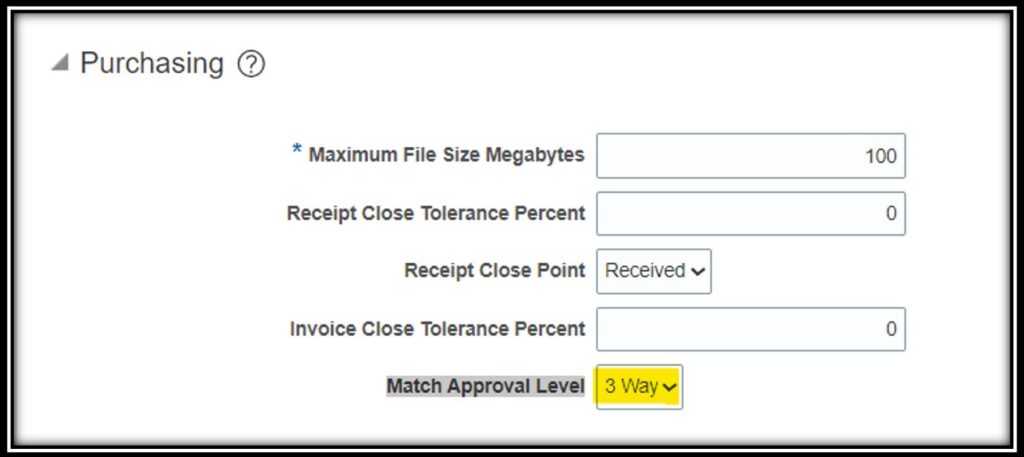
Inputs and Outcomes
- Demand for goods and services is raised by employees or is autogenerated through supply chain applications
- Payment is made against the liability to reduce the outstanding balance
- Asset purchases are added to Asset books
- The accounting transformation process creates eligible accounting entries as journals in the general ledger
Oracle Procurement Cloud
Oracle Procurement Cloud is a powerful tool that supports the Enterprise Procurement business process. Every quarter, Oracle adds new features to the platform to enhance its capabilities. Additionally, Oracle provides a range of tools and templates that help reduce implementation time, giving businesses more time to optimize their processes. The ERP system is designed to be quick, simple, and convenient, putting the business in control.
Our Centroid Procure to Pay Specialists
Our team has extensive knowledge and experience in implementing this solution and improving the P2P process for numerous clients. We will thoroughly analyze your enterprise’s procurement process and recommend the best practices to help you save costs. Here are a few examples of our client engagements:
- Expertise on how to find areas of improvement in client’s existing Procurement process.
- Expertise to build opportunities for cost reduction in the Procurement process.
- Centroid has designed best practices to improve Procure to Receiving processes and helped clients to collaborate with the Payables department and achieve process optimization.
- In another Client engagement Centroid team has utilized the features of Procurement software to optimize their Procurement process.
- Developed Analytics/Bi Reports to provide deeper insights into a client Procurement process and that helped them to improve the procurement process.
You can contact the authors directly or contact our office to learn more about Oracle Procurement Cloud and how our team can help implement and improve your Procure to Pay process.
Amarnath Kasturi – Lead Consultant
Email: [email protected]
Satyam Damisetti – Lead Consultant
Email: [email protected]


